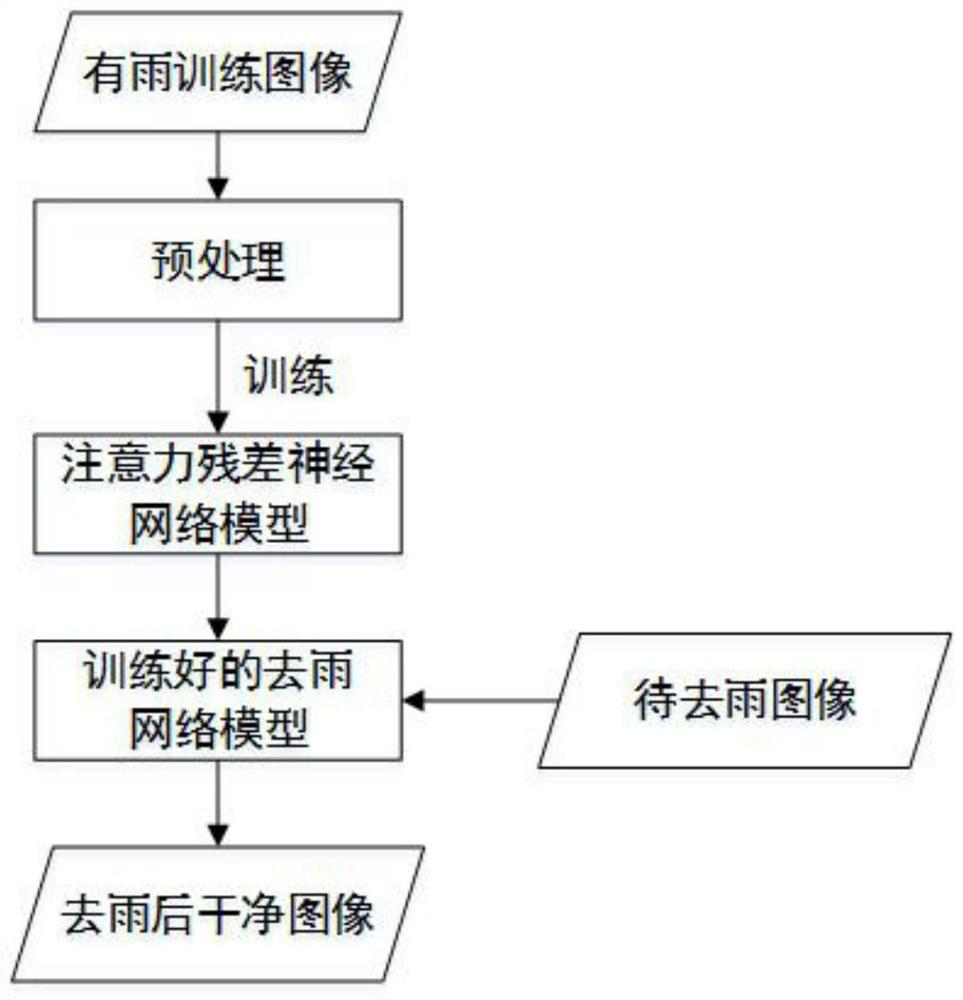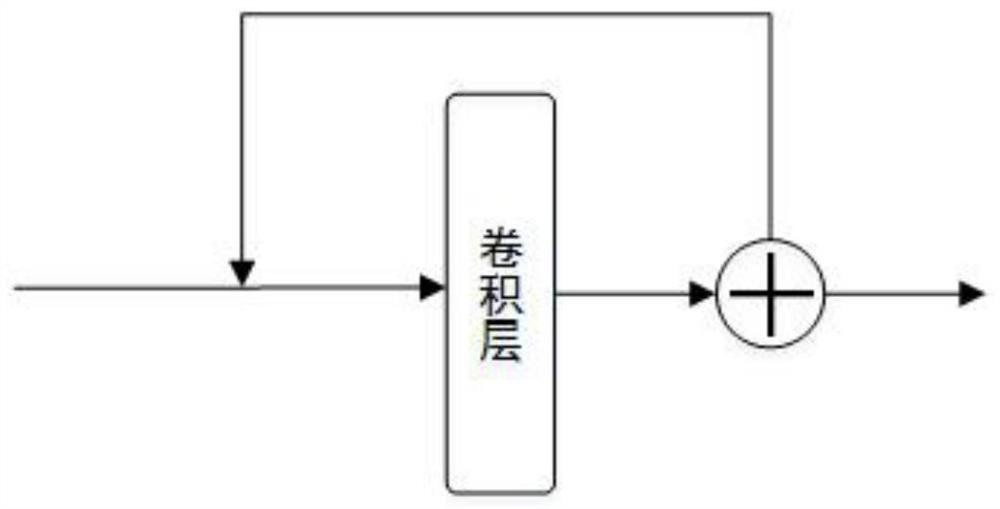Residual single image rain removal method based on attention mechanism
An attention and residual technology, applied in the field of image processing, can solve the problems that the convolutional neural network structure is too simple and cannot achieve the removal effect, and achieve the effect of simple network training process, good rain removal effect, and reduced interference
- Summary
- Abstract
- Description
- Claims
- Application Information
AI Technical Summary
Problems solved by technology
Method used
Image
Examples
Embodiment 1
[0031] Refer to attached figure 1 , a method for removing rain from a residual single image based on an attention mechanism proposed by the present invention, comprising the following steps:
[0032] Step 1: Preprocess the input image to obtain a rainy image after preprocessing;
[0033] The preprocessing is specifically: normalize the pixel value of the input image to [0, 1], and crop the pixel size to 256*256*3.
[0034] Step 2: Build an attention residual neural network model;
[0035] (2.1) Convolutional residual blocks composed of convolutional layers, short skip connections, and long skip connections are used to form a residual network module for image feature extraction of rainy images after preprocessing;
[0036] Such as figure 2 As shown, in this embodiment, one convolutional layer, five convolutional residual blocks composed of short skip connections, and one long skip connection constitute a residual network module, which is used to extract image features from ...
Embodiment 2
[0058] refer to Figure 4 , a schematic diagram of a deep learning model of the method of the present invention;
[0059] The present invention's method for removing rain from a residual single image based on the attention mechanism is the same as in Embodiment 1, wherein the attention residual neural network model constructed in step 2, the image processing process is specifically as follows:
[0060] 4.1, input a rainy image, after the first convolutional layer processing, the output feature F1, the number of channels is 32, the output feature F1 is processed by 5 convolutional residual blocks composed of short skip connections, and the output feature F2, the number of channels is 32;
[0061] 4.2, the output feature F1 and the output feature F2 are connected by long jumps, and the output feature F3 is output;
[0062] 4.3, the output feature F3 is processed by the channel attention module SE_Block, and the output feature F4;
[0063] 4.4, the output feature F4 undergoes ...
Embodiment 3
[0082] The residual single image deraining method based on attention mechanism is the same as embodiment 1-2, the channel attention module SE_Block described in step (2.2.1), such as Figure 5 As shown; the specific steps for image features to be processed by channel attention module SE_Block include:
[0083] 5.1, after the image features of the input image pass through the global pooling layer, fully connected layer, ReLU activation layer, fully connected layer and Sigmoid layer in turn, output the weight of each channel;
[0084] 5.2. Multiply the weight of each channel output in step 5.1 with the input image feature of step 5.1 channel by channel, and output the processed image feature.
[0085] The present invention uses the residual network and codec network structure to extract more detailed image features, fully obtains the rain pattern information of the rainy image, and adopts the attention mechanism to further obtain more detailed information of the rain pattern in ...
PUM
 Login to View More
Login to View More Abstract
Description
Claims
Application Information
 Login to View More
Login to View More - R&D
- Intellectual Property
- Life Sciences
- Materials
- Tech Scout
- Unparalleled Data Quality
- Higher Quality Content
- 60% Fewer Hallucinations
Browse by: Latest US Patents, China's latest patents, Technical Efficacy Thesaurus, Application Domain, Technology Topic, Popular Technical Reports.
© 2025 PatSnap. All rights reserved.Legal|Privacy policy|Modern Slavery Act Transparency Statement|Sitemap|About US| Contact US: help@patsnap.com



